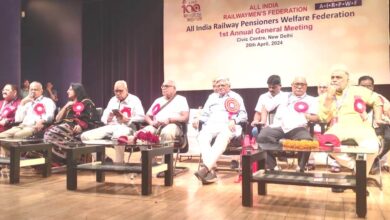Revolutionizing Meteorology: Ministry of Earth Sciences Harnesses AI for Enhanced Weather Predictions

New Delhi: The Ministry of Earth Sciences (MoES) is spearheading a transformative journey in meteorological research, integrating Artificial Intelligence (AI) and Machine Learning (ML) techniques to elevate the precision of weather, climate, and ocean forecasts. The ministry has taken significant strides by establishing a dedicated AI and ML virtual center tasked with the development and testing of cutting-edge techniques, coupled with capacity-building initiatives through workshops and conferences.
At the forefront of this technological leap is the India Meteorological Department (IMD), which now hosts a sophisticated computing environment and virtual workspace on a Graphical processor-based server. This facility is instrumental in training and deploying AI models, propelling the nation into a new era of weather prediction capabilities.
Key Achievements and Outcomes in AI and ML Integration:
- Enhanced Short-Range Precipitation Forecast: AI and ML interventions have significantly improved short-range precipitation forecasts with a remarkable reduction in bias at 1-day, 2-day, and 3-day lead times.
- High-Resolution Urban Gridded Meteorological Data Sets: The development of high-resolution (300m) urban gridded meteorological data sets for temperature and precipitation, providing a detailed understanding of urban weather patterns.
- Time-Varying Normalized Difference Urbanization Index: A groundbreaking achievement in developing a time-varying Normalized Difference Urbanization Index, offering a spatial resolution of 30 meters from 1992-2023.
- Very High-Resolution Precipitation Data Sets: Tailored precipitation data sets have been crafted for verification purposes, aiding in fine-tuning forecast models.
- Deep Learning for Precipitation Nowcasting: The exploration of a Deep Learning approach for precipitation nowcasting, utilizing data from Doppler Weather Radars (DWRs) to refine real-time forecasting capabilities.
MoES envisions a future where weather and climate forecasts seamlessly integrate the hybrid technology of AI/ML models with traditional numerical weather prediction models. The relentless encouragement for institutes under MoES to leverage AI and ML in Earth Sciences extends to enhancing the High-Performance Computing (HPC) infrastructure. Additionally, the ministry underscores the significance of AI and ML-based data-driven modeling for generating species-specific Potential Fishing Zone (PFZ) advisories, benefiting fishermen across coastal states.
Union Minister of Earth Sciences, Kiren Rijiju, shared these groundbreaking developments in a written reply in the Rajya Sabha, emphasizing the commitment to advancing meteorological capabilities through the fusion of technology and science. The integration of AI and ML is poised to redefine the landscape of weather forecasting, ensuring more accurate and timely predictions for the nation.




